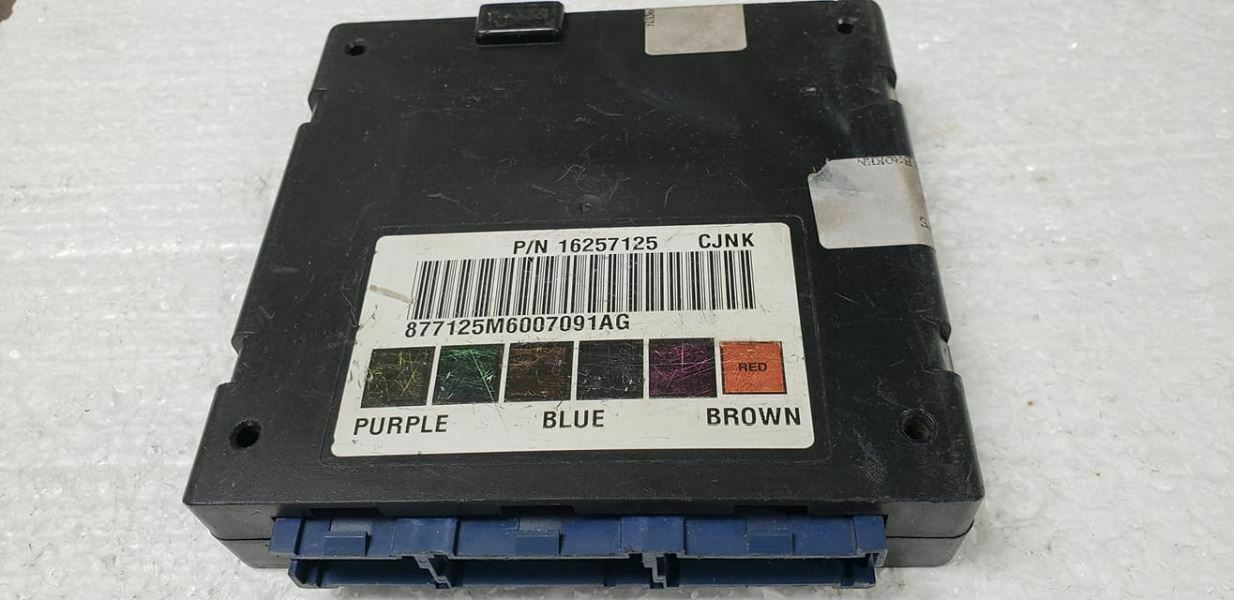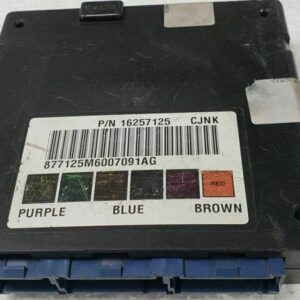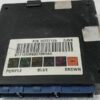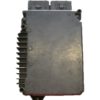Are you chasing down bizarre electrical issues in your 2000 Chevrolet Astro or another compatible GM vehicle? If you’re dealing with flickering lights, power windows and locks with a mind of their own, or a security system that randomly prevents your vehicle from starting, you’ve likely pinpointed the culprit: a failing Body Control Module (BCM). As a technician with over two decades of experience, I’ve seen how a faulty BCM can turn a reliable truck or van into a source of daily frustration. This isn’t just a part; it’s the central command for your vehicle’s body electronics, and when it fails, chaos ensues.
This is the definitive solution. We provide a high-quality replacement BCM that is professionally programmed to your vehicle’s specific Vehicle Identification Number (VIN) before it ever leaves our facility. This critical step ensures seamless integration with your vehicle’s existing systems. By programming the module with the latest GM software updates, we help restore original functionality and communication between modules, eliminating the need for an expensive trip to the dealership for programming. Simply provide your VIN during checkout, and we’ll handle the rest, shipping you a part that’s ready for installation.
From the Diagnostic Bay: The Phantom Battery Drain
A customer brought in a 2000 GMC Safari with a classic complaint: a dead battery every two or three days. They had already replaced the battery and the alternator, but the problem persisted. After connecting my multimeter to test for parasitic draw, I found a significant drain. By pulling fuses one by one, I isolated the circuit to the BCM. The internal circuits of the original module had failed, preventing it from going into ‘sleep’ mode when the van was off. It was constantly drawing power, draining the new battery. Installing a correctly programmed BCM didn’t just fix the obvious electrical gremlins; it solved the phantom battery drain that had cost the owner hundreds in incorrect repairs.
Is Your GM Truck or Van Showing These Signs?
A failing BCM can manifest in numerous ways. If you’re noticing any of the following, it’s a strong indicator that your Body Control Module needs attention:
- ✔ Erratic or non-functional power windows, door locks, or mirrors.
- ✔ Interior lights staying on, flickering, or not working at all.
- ✔ The security or anti-theft light is on, causing a no-start condition.
- ✔ Gauges on the instrument cluster behaving erratically or not working.
- ✔ Horn honking unexpectedly or not working when pressed.
- ✔ Diagnostic trouble codes (DTCs) related to lost communication, such as U0140, U0155, or other U-codes.
A Straightforward Guide to BCM Installation
Replacing the BCM is a manageable job for a DIYer with basic tools. The location can vary, so confirm if it’s in the left-hand (driver’s side) dash or center dash for your specific model.
- Safety First: Always disconnect the negative terminal from your vehicle’s battery before beginning any electrical work.
- Locate the Module: On the 2000 Astro, the BCM is typically found on the left-hand side of the dashboard, often behind the lower dash panel. On other models like the S10/Blazer, it may be in the center dash area.
- Remove Trim Panels: Carefully remove any plastic trim or panels necessary to access the BCM.
- Disconnect and Remove: Unplug the electrical connectors from the old BCM. They have locking tabs that need to be depressed. Once disconnected, unbolt or unclip the module from its mounting bracket.
- Install the New BCM: Mount your new, pre-programmed BCM in the same location and securely reconnect all electrical connectors.
- Reconnect and Test: Reconnect the negative battery terminal. Turn the key to the ‘On’ position and test all body functions—windows, locks, lights, etc.—to confirm proper operation.
Important Post-Installation Steps
While our VIN programming handles the majority of the setup, some vehicles may require additional synchronization with a professional scan tool:
- Airbag System Sync: If your airbag warning light is on after installation, a ‘Setup SDM Primary Key in BCM’ procedure is needed to sync the modules.
- Brake Pedal Position Relearn: On some models, a brake pedal position sensor recalibration may be necessary for correct brake light and traction control operation.
Disclaimer: Always consult a factory service manual or a qualified technician for procedures specific to your vehicle.
Verified Vehicle Compatibility
This BCM is a direct replacement for part numbers 19153625, 8191536250, 16257125, 191583625, 8093668010, 8162571250, and 09366801. It is guaranteed to fit the following vehicles:
BLAZER S10/JIMMY S15 1998-2000 (center dash, ID 16257125)
BRAVADA 1998 (center dash, w/extended build date opt ZN4)
ISUZU HOMBRE 1999-2000 (LH dash)
S10/S15/SONOMA 1998-2000 (center dash, ID 16257125)
SAFARI (GMC) 2000 (LH dash)
SIERRA 1500/2500 PICKUP 1999 (LH dash)
SIERRA 1500/2500 PICKUP 2000 (LH dash, ID 16257125)
SILVERADO 1500/2500 PICKUP 1999 (LH dash)
SILVERADO 1500/2500 PICKUP 2000 (LH dash, ID 16257125)
Frequently Asked Questions
Frequently Asked Questions
Why do you need my VIN?
We use your Vehicle Identification Number (VIN) to program the BCM with the exact software and calibrations for your vehicle’s specific options. This ensures it works correctly right out of the box, saving you a trip to the dealer.
Is this a plug-and-play part?
Yes, for most vehicles. Because we pre-program it, the physical installation is plug-and-play. However, as noted, some models may require a simple relearn procedure for the airbag or brake systems with a scan tool if a warning light appears.
Do I need to send my old BCM back?
No. There is no core charge for this part. You can keep your original module.
Will this fix my ‘Security’ light issue?
In most cases, yes. The BCM is a key component of the GM Passlock/Passkey anti-theft system. A failing BCM is a very common cause of a persistent security light and no-start problems. Our programming correctly syncs the security data to your vehicle.



